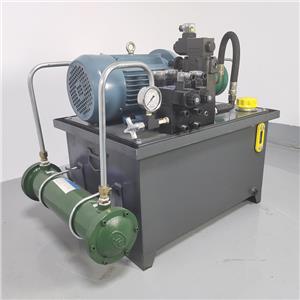Plastic waste behind 21.3 billion cups of ready-made tea a year has increased, and the report reveals the path of plastic reduction in the industry
In the past year, Chinese consumers consumed more than 21.31 billion cups of freshly made tea, equivalent to an average of 676 cups every second. Behind the consumption of these tea drinks, about 430,400 tons of plastic waste is produced.
On September 4, the Pacific Environmental Resources Center, an environmental protection organization, released the report "Unlocking the New Green nature of milk tea: Research on the plastic Reduction path of China's milk tea Industry", which put forward suggestions for the plastic reduction path of the industry in the next five years in view of the plastic waste growth challenges behind the expansion of new tea drinks.
Behind the expansion of new tea drinks: plastic waste growth.
The report estimated the amount of plastic waste generated by the consumption of new tea in the past year, based on the amount of cups released by the major brands of new tea and the average weight of major packaging such as tea cups. Among them, 70% of plastic waste comes from the top 10 well-known chain brands in terms of sales on delivery platforms.
The report estimated the amount of plastic waste generated by the consumption of new tea in the past year, based on the amount of cups released by the major brands of new tea and the average weight of major packaging such as tea cups. Among them, 70% of plastic waste comes from the top 10 well-known chain brands in terms of sales on delivery platforms. However, existing recycling systems are not mature, which means that this plastic waste either enters the environment as a source of pollution or cannot be reused in landfills or incineration plants.
As 2025 approaches, China's 2020 "Opinions of the Ministry of Ecology and Environment of the National Development and Reform Commission on Further Strengthening Plastic pollution Control", that is, the "new plastic limit order", has entered the final stage. Takeaway catering as a key regulatory industry, the goal is to reduce the industry's use of non-degradable disposable plastic tableware by 30% in cities at the prefecture level and above.
The report pointed out that recent studies show that the total amount of takeaway plastic packaging waste in China is between 460,000 tons and 1.68 million tons per year, and the plastic waste in the new tea industry has reached the same volume. If no measures are taken, by 2030, the total amount of waste generated by the new tea industry will reach 1.241 million tons per year, 2.8 times that of 2023.
"As an important member of the catering industry, a wide range of new tea consumer groups, especially favored by young consumers, because of this, their demonstration effect in plastic reduction is particularly critical." If enterprises can take the lead, it will have a positive impact on promoting the green transformation of the catering industry and the realization of the national plastic reduction target." Li Chenyang, a waste free city project officer at the Pacific Environment and Resources Center, said when releasing the report.
Plastic reduction path: from the source to the recycling to achieve a closed loop.
In order to meet this challenge, the report proposes that the new tea industry should start from four aspects: source reduction, reuse, careful use of alternative materials and drive recycling to achieve zero plastic vision.
Delicate tea packaging often stimulates consumers to try fresh tea and is more exposed by social media, but such marketing methods make the weight of tea cups significantly increase. A 2022 environmental group survey found that the packaging of a cup of tea contains up to 12 pieces, of which non-essential packaging accounts for more than 30% of the total weight of the package. The report recommends reducing waste in production and sales, using lightweight design, and eliminating unnecessary packaging and accessories as much as possible. If action to reduce plastics begins immediately, it is expected that 366,700 tons of waste can be reduced annually by 2030.
Reuse patterns are not new to consumers, with non-disposable mugs and take-home cups being typical examples. While offers to bring their own cups have become relatively common among large coffee chains, the report notes that only two of the top 10 new tea chains have long encouraged consumers to use less single-use plastic packaging through this initiative.
Merchants can further promote reuse by offering "recycling cups." For consumers who don't have to bring their own cups with them, circular cups offer a sustainable alternative for those who want to drink without creating waste.
Recycled cups are usually operated by specialist companies, and after consumers use them in one store, they can be returned in other stores or at street return points, where the cups are sterilized and used again. The Paris Olympics adopted a circular cup, avoiding the use of disposable plastic cups. Singapore, Taiwan, Europe, North America and other regions have successful practice of circular cups.
However, at present, the domestic has not established a mature circular cup market. The report points out that the construction of the circular cup system requires upfront investment, which will increase operating costs and business risks. Therefore, in order to guide consumers to change the consumption habits of disposable plastic packaging, in the early stage of promotion, it is recommended that the government, management agencies, third-party institutions and tea companies share the transformation costs.
The report suggests that new tea companies can also replace petroleum-based plastics by using non-petroleum-based materials. Since the promulgating of the "new plastic restriction order", milk tea companies have replaced plastic straws with paper or bio-based materials. However, the report warns that alternative materials have their own specific degradation conditions, and China's current waste classification system prevents many alternative materials from being properly recycled. In addition, alternative materials in the production, manufacturing, transportation process will also produce carbon emissions, waste and wastewater and other environmental issues, so the full life cycle environmental impact of the material needs to be carefully assessed.
Finally, for the inevitable plastic waste in tea packaging, the report recommends that recycling should be promoted by adopting easy recycling design, improving recycling processes and other measures to reduce the generation of final waste.
The report shows that if the measures are fully implemented, by 2030, the total amount of waste in the new tea industry can be reduced to 419,700 tons, 21.82% less than in 2024, and 66.18% less than in the "business as usual" scenario.
Finally, the report emphasizes that in order to achieve the goal of zero waste in the industry, it depends on the systematic transformation of the consumer environment, and enterprises are only one part of it, and it is also necessary to improve the plastic reduction policy and obtain the active participation and support of consumers to jointly promote the transformation.
Chenyang Li said: "Global consumer choice is driving industries towards sustainable development, and new tea is no exception. Milk tea does not have to be bundled with 'disposable'. With the participation of consumers, the green transition will bring new trends and opportunities for new tea drinks."




